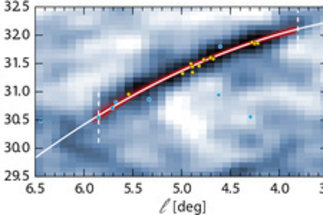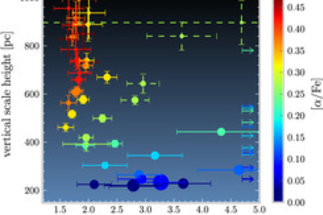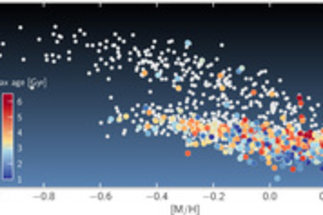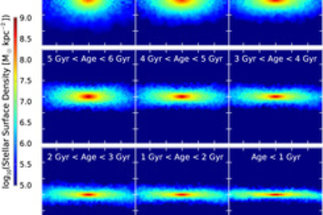

Dark matter, cold gas, and stars are shown in three parallel views of a simulation of the formation of the Milky Way.
MPIA/G.Stinson
Why study the Milky Way?
- It is a very typical galaxy (e.g., by mass)
- It is our galaxy (e.g., proximity allows for detailed observations)
Observations can tell us the probability distribution of a star's orbit, age, and composition, for every star in the Galaxy.
Questions
The main questions we address on the different aspects of our research are:
- Did the Milky Way form inside out?
- Why is the disk as large and thin/thick as it is observed?
- Do stars stay on their birth orbits?
- How was the Milky Way's stellar halo assembled?
Tools
We use a number of powerful tools that, when combined, produce a comprehensive and detailed picture of our galaxy today:




